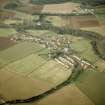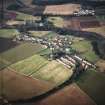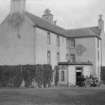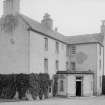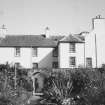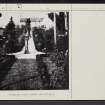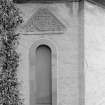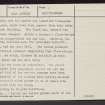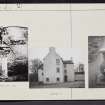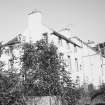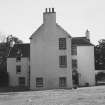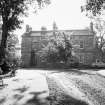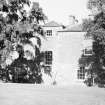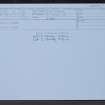Following the launch of trove.scot in February 2025 we are now planning the retiral of some of our webservices. Canmore will be switched off on 24th June 2025. Information about the closure can be found on the HES website: Retiral of HES web services | Historic Environment Scotland
Ruchlaw House
Country House (17th Century)
Site Name Ruchlaw House
Classification Country House (17th Century)
Canmore ID 57835
Site Number NT67SW 5
NGR NT 61845 74121
Datum OSGB36 - NGR
Permalink http://canmore.org.uk/site/57835
- Council East Lothian
- Parish Whittingehame
- Former Region Lothian
- Former District East Lothian
- Former County East Lothian
NT67SW 5.00 6183 7411
NT67SW 5.01 NT 618 740 Sundials
NT67SW 5.02 NT 6180 7405 Garden House
NT67SW 5.03 NT 6179 7412 Offices
NT67SW 5.04 NT 618 741 Garden
NT67SW 5.05 NT 61769 73922 Little Ruchlaw
For Ruchlaw House, Dovecot, see NT67SW 4
(NT 6183 7411) Ruchlaw (NAT)
OS 6" map (NG)
Ruchlaw. On the left bank of the Sauchet Water, and less than 1/4 mile west of Stenton, village on the other bank, is the mansion of Ruchlaw, a 17th century house built by Archibald Sydserff and still occupied by his descendants. It is built on an L plan; the main block, 67 feet long by 21 feet broad, lying east and west and the wing, which contains a turnpike stair, projecting southward from the eastern end. The building is three storeys in height. The walls are built of a reddish rubble in courses and are covered with harling, but the plain backset dressed margins of the voids and the moulded Renaissance eaves course are left exposed; the gables are crowstepped.
On a modern porch, which has been built out in the re-entering angle, are two carved and inscribed triangular pediment stones, which have been removed from some other portion of the building. The first has, beneath two stars, a shield charged: within a bordure a fleur-de-lys between three cinque-foils two and one. Flanking the shield are the initials A.S. for Archibald Sydserff, the founder, and the date 1663. The second pediment has a quaterfoiled ornament comprising four fleur-de-lys conjoined at the stalk, flanked by initials AS with initials ES below and the date 1663.
Internally the house is modernised; the ground floor apartments were originally vauled but all the vaults except that of the eastern chamber have been removed. Several of the windows have heavily moulded cases and astragals which appear to ne of memel pine and contemporary with the house.
The building is in good condition.
Sundials - Within the walled garden south of the house are two sundials. The first is a 17th century lecturn dial 5 feet 8 inches high (fig. 83). The shaft is octagonal as plan and has a moulded necking, capital and base.
The dial-stone is wrought into 35 dials; the gnoma have been of wrought iron and are completely oxidised. This dial is presumably not in situ having been re-erected in the 19th century (D MacGibbon and T Ross 1897).
The second dial is later and less interesting. The dial stone is a small, flat slab of white marble, has a wrought iron gnomon, and is inset in a red freestone baluster, the total height being 3 1/2 feet. The marble slab bears an illegible inscription, usually taken to be Roughlaw.
Historical Note. - William 'Sydserff' of Ruchlaw is on Record in 1623 (Reg Magni Sig Reg Scot); Mr James 'Sydserfe' of 'Rouchla' was in 1644, appointed to take control of the Whittinghame estates, (Reg Privy Cnl) and Archibald 'Sydserfe' of Ruchlaw (1666) was his son (Inquisit Special Haddington No.283).
RCAHMS 1924, visited 1920
Ruchlaw is generally as described by the RCAHMS. The modern porch was removed about 1956 and only the pediment stone bearing the initials 'A S' remains, now above the new entrance.
The 17th century sundial was destroyed about 1960 and a fragment built into the greenhouse at NT 6181 7404, while the second is still in situ at NT 6183 7406.
Visited by OS (RD) 6 April 1966.
Field Visit (24 April 1920)
217. Ruchlaw.
On the left bank of the Sauchet Water, and less than ¼ mile west of Stenton village on the other bank, is the mansion of Ruchlaw, a 17th-century house built by Archibald Sydserff and still occupied by his descendants. It is built on an L plan; the main block, 67 feet long by 21 feet broad, lying east and west and the wing, which contains a turnpike stair, projecting southward from the eastern end. The building is three storeys in height. The walls are built of a reddish rubble in courses and are covered with harling, but the plain backset dressed margins of the voids and the moulded Renaissance eaves course are left exposed; the gables are crowstepped.
On a modern porch, which has been built out in the re-entering angle, are two carved and inscribed triangular pediment stones, which have been removed from some other portion of the building. The first has, beneath two stars, a shield charged: within a bordure a fleur-de-lys between three cinquefoils two and one. Flanking the shield are the initials A S for Archibald Sydserff, the founder, and the date 1663. The second pediment has a quarter-foiled ornament comprising four fleur-de-lys conjoined at the stalk, flanked by initials A S with initials E S below and the date 1663.
Internally the house is modernised; the ground floor apartments were originally vaulted but all the vaults except that of the eastern chamber have been removed. Several of the windows have heavily moulded cases and astragals which appear to be of memel pine and contemporary with the house.
The building is in good condition.
SUNDIALS.
Within the walled garden south of the house are two sundials. The first is a 17th-century lectern dial 5 feet 8 inches high (fig. 83). The shaft is octagonal on plan and has a moulded necking, capital and base. The dial-stone is wrought into 35 dials; the gnoma have been of wrought iron and are completely oxidised. This dial is presumably not in situ having been re-erected in the 19th century (1).
The second dial is later and less interesting. The dial stone is a small, flat slab of white marble, has a wrought iron gnomon, and is inset in a red freestone baluster, the total height being 3 ½ feet. The marble slab bears an illegible inscription, usually taken to be ROUGHLAW.
DOVECOT.
Within a park 200 yards southwest of the house is a dovecot rectangular on plan and probably contemporary with the house.
HISTORICAL NOTE.
William 'Sydserff' of Ruchlaw is on record in 1623 (2); Mr. James, ‘Sydserfe’ of ‘Rouchla’ was in 1644, appointed to take control of the Whittinghame estates (3), and Archibald ‘Sydserfe’ of Ruchlaw (1666) was his son (4).
RCAHMS 1924, visited 24 April 1920.
(1) Cast. and Dom. Archit. v., p. 424; (2) Reg.Mag. Sig. s.a., No. 498; (3) Reg. Pr. Co. viii., (Second Series) p. 36; (4) Inquisit. Special. Hadd. No. 283.
OS Map ref.: xi. N.W.






















